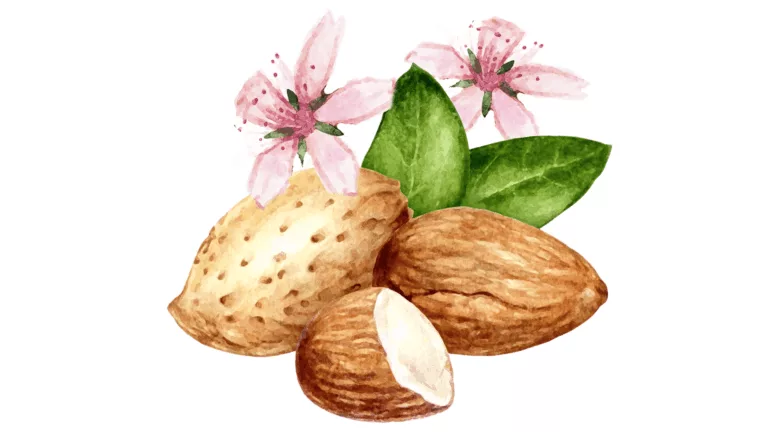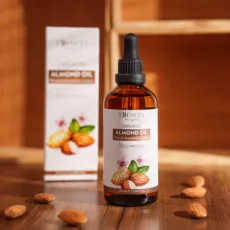Almond (Prunus dulcis) is a highly branched, deciduous tree that belongs to the Rose family (Rosaceae). The tree has very beautiful blossoms, which is why it is often planted for ornamental purposes. Almonds bloom early in spring, and the fruits ripen at the end of summer. Its flowers contain a large amount of nectar. Almonds are a wonderful honey plant, exuding a magical fragrance during flowering. Almond trees are also called “the Queen of the Rose family.”
The almond is native to Central Asia and the Middle East. According to some sources, North Africa is also considered the homeland of the almond.
The almond is regarded as a divine nut. Legend has it that the ancient Greek god Attis, famed for his beauty, was born from the seed of an almond tree. In the Bible, the almond tree is considered a sacred tree and a symbol of hope. In the Old Testament there is the story of Aaron’s rod, which blossomed and bore almonds as a sign of God’s approval. The shape of the halo around the heads of saints in paintings with biblical subjects is called “amygdale” (from the Latin name of the nut).
The almond is thought to be one of the first domesticated fruit species. Evidence of domesticated almonds appears as early as the Early Bronze Age (3000–2000 BCE). In Ancient Egypt the plant’s fruits were considered an absolute delicacy. Served to the pharaohs of ancient Egypt as sacred bread and prized worldwide as food for the brain, almonds earned a reputation for being exceptionally nutritious and delicious. Almond oil was used in many cosmetic procedures and in priests’ rituals. The ancient Egyptians also used bitter almonds as medicine. From them they made almond water (Aqua Amygdalarum amararum), which was applied as an analgesic and mild anesthetic. An Egyptian papyrus from 5,000 years ago mentions “aqua amigdalorum” for the treatment of skin tumors. Almonds were found in the tomb of Tutankhamun.
In Ancient Rome almonds were used in wedding ceremonies, since by the traditions of the time they were a source of health and fertility. In the Middle Ages on the territory of today’s Italy, five sugar-coated almonds were given at weddings, each symbolizing health, wealth, happiness, fertility, and longevity. To this day in Italy the tradition continues, and at weddings the newlyweds give sugar-coated almonds to their guests as a keepsake of the wedding day. This tradition is inspired by the Greek legend of the love between Demophon and the Thracian princess Phyllis and has become a symbol of undying love.
In Iran almonds are called the “heavenly tree,” and among Native Americans they are associated with fertility. The Chinese regard the almond tree as a symbol of springtime renewal. In India these divine gifts of nature are considered a basic ingredient for stimulating children’s mental abilities. The ancient Japanese valued alabaster flasks of almond oil and sea salt as a proven elixir for a beautiful face and hair.
Today almonds are considered a superfood. They combine a wonderful taste with an abundance of healthy and beneficial components.









